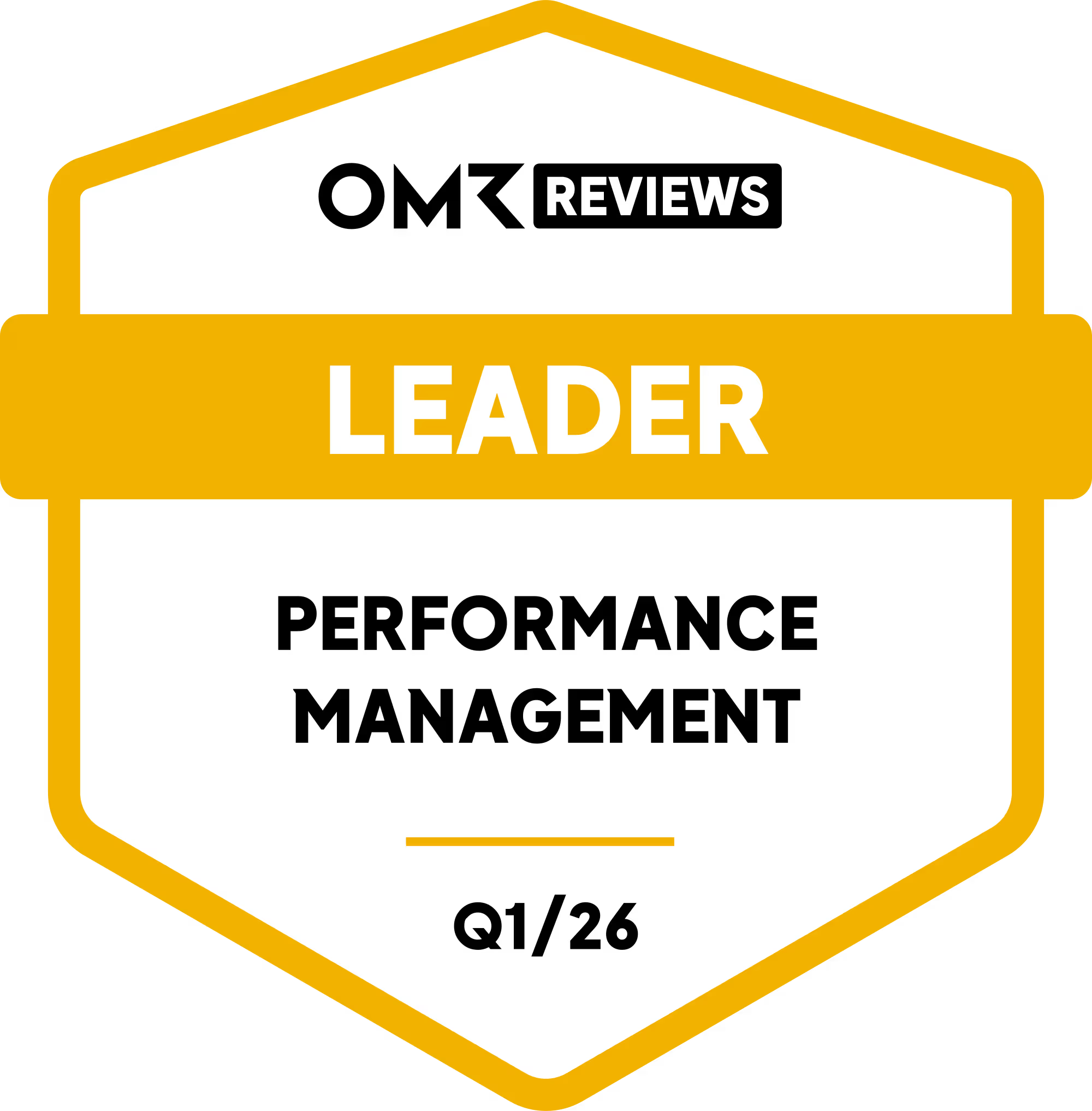Besprechungen am Arbeitsplatz: der ultimative Leitfaden

Besprechungen am Arbeitsplatz sollen Teams zusammenbringen, Ideen anregen und Projekte voranbringen. Aber zu oft verfehlen sie dieses Ziel. Da 80% der Mitarbeiter an bis zu zehn wöchentlichen Besprechungen teilnehmen, würden Sie erwarten, dass aussagekräftige Ergebnisse folgen — aber Quantität ist nicht gleich Wert. Zunächst einmal haben nur 30% dieser Besprechungen eine klare Tagesordnung*. Das kostet Zeit, Aufmerksamkeit und Energie.
Da Telearbeit und hybrides Arbeiten zur Norm werden, wird die Überlastung der Besprechungen immer schlimmer. Und die Fachleute von heute sagen, dass die Hälfte ihrer Besprechungen Zeitverschwendung ist. *
Also, wie beheben wir das?
In diesem Leitfaden werden wir untersuchen, wie KI- und Telearbeit die Zusammenarbeit verändern, die verschiedenen Arten von Besprechungen am Arbeitsplatz aufschlüsseln und teilen Sie Strategien, um sie effizienter zu machen.
Wenn Sie weniger sinnlose Besprechungen und mehr sinnvolle Arbeit wünschen, lesen Sie weiter — wir kommen direkt zu den Lösungen.
🎉 Bringen Sie Ihre Besprechungen mit Leapsome auf ein neues Niveau
Endlich Halten Sie effektive Besprechungen mit Tools ab, die für echte Ergebnisse entwickelt wurden.
👉 Machen Sie eine Produkttour
*Bericht über die Belegschaftstrends von Leapsome, 2023
Was ist ein Meeting am Arbeitsplatz?
Bei einem Meeting am Arbeitsplatz kommen Kollegen persönlich oder online zusammen, um arbeitsbezogene Themen zu besprechen. Einige Besprechungen folgen festen Zeitplänen (z. B. wöchentliche Teamsynchronisationen), während andere nach Bedarf organisiert werden — wie Strategiesitzungen oder Krisenmanagement-Besprechungen.
Unabhängig vom Format gibt es Besprechungen am Arbeitsplatz, um Teams aufeinander abzustimmen, Entscheidungen zu treffen und Projekte voranzutreiben. Wenn sie richtig gemacht werden, helfen sie Teams, Missverständnisse zu vermeiden, die Rechenschaftspflicht zu fördern und Arbeitsabläufe und Mitarbeiter auf Kurs zu halten.
🌟 Erkunden Sie die Ressourcenbibliothek von Leapsome für effektive Besprechungen am Arbeitsplatz
✨ Laden Sie unsere kostenlose Vorlage für ein Einzelgespräch herunter um aussagekräftigere Check-Ins abzuhalten und das Mitarbeiterwachstum zu fördern.
✨ Erfahren Sie, wie Sie wirkungsvolle Einzelgespräche führen mit unserem umfassenden, schrittweisen Playbook.
✨ Machen Sie Ihre Besprechungen effizienter durch die Nutzung asynchroner Kommunikation und die Reduzierung unnötiger Anrufe.
✨ Entdecken Sie, wie engagiert sich Leapsome Tagungen Ein Modul kann die Art und Weise, wie Ihr Unternehmen zusammenarbeitet, bereichern.
Warum ist es 2025 so wichtig, effektive Besprechungen am Arbeitsplatz abzuhalten?
Besprechungen sollten den Fortschritt vorantreiben und ihn nicht bremsen. Wenn sie effektiv sind, beschleunigen sie die Entscheidungsfindung, fördern Innovationen und fördern die Problemlösung. Wenn sie es nicht sind, kosten sie Unternehmen Millionen an Produktivitätseinbußen — so viel wie 100 Millionen US-Dollar pro Jahr.
Angesichts knapper werdender Margen und des wachsenden Ergebnisdrucks verdoppeln Unternehmen ihren ROI, ihre Effizienz und ihre intelligentere Ressourcenzuweisung. Besprechungen Muss dienen einem klaren Zweck und füllen nicht nur Kalender aus. Im Jahr 2025 bedeutet das Nutzung von KI, bessere Möglichkeiten der Zusammenarbeit zu finden und dafür zu sorgen, dass jedes Meeting zählt.
So sieht ein effizientes Meeting am Arbeitsplatz aus
.webp)
- Hat eine klare Agenda: Jeder weiß, was ihn erwartet, ist vorbereitet und kann einen wichtigen Beitrag leisten.
- Beinhaltet die richtige Teilnehmer: Unnötige Besprechungsteilnehmer führen dazu, dass Diskussionen aus dem Ruder geraten und Zeit verschwendet wird.
- Ist zeitbewusst und handlungsorientiert: Respektiert die Zeit der Mitarbeiter und endet mit klaren nächsten Schritten, sodass die Mitarbeiter wissen, was sie als Nächstes tun sollen.
Es ist genauso wichtig für finde ein schlechtes Meeting wie es heißt, ein gutes Unternehmen zu führen — damit Sie die Zeit aller optimal nutzen, Ermüdung vermeiden und eine bewusste Produktivitätskultur entwickeln können.
Was für ein erfolglos Ein Meeting am Arbeitsplatz sieht aus wie
- Es fehlt an Struktur: Ein Meeting, das kein klares Thema oder keine klare Richtung hat, erschwert es den Teammitgliedern, sich zu konzentrieren und zu verstehen, was sie erreichen sollen.
- Ist länger als erwartet: Wenn Besprechungen lange dauern, kosten sie Unternehmen Zeit und Geld, beeinträchtigen die Produktivität und verkürzen die Arbeitstage der Mitarbeiter.
- Fühlt sich an wie ein Monolog: Es macht keinen Sinn, ein Meeting abzuhalten, wenn es nicht der Zusammenarbeit dient und Fragen und Gespräche ermöglicht. Wenn dies nicht das Ziel ist, sollten Sie erwägen, E-Mail oder eine andere asynchrone Methode zu verwenden.
Die Auswirkungen der Telearbeit auf Besprechungen am Arbeitsplatz
Arbeit aus der Ferne hat Besprechungen am Arbeitsplatz verändert — sie virtuell und einfacher planbar zu machen. Das hilft Unternehmen zwar dabei, inklusiver und dynamischer zu werden, kann aber auch mehr virtuelle Besprechungen, die zu “Zoom-Müdigkeit.“
Bei zu häufigen Videoanrufen und Check-Ins können Telearbeiter Schwierigkeiten haben, sich zu konzentrieren und Zeit für ihre zu erbringende Arbeit zu finden. Das führt zu Stress, geringerer Produktivität und einem schlechteren Erfahrung der Mitarbeiterund sogar Burnout.
Aus diesem Grund müssen Unternehmen heute überdenken, wie sie virtuell zusammenarbeiten. Jennie Rogerson, Personalleiterin bei Canva, erzählte CNBC wie das größtenteils remote arbeitende Team des Unternehmens produktive Besprechungen organisiert: „Jedes Meeting sollte ein Ziel haben.“ Kein klares Ziel, kein Treffen.
Rogerson teilte auch mit, dass Canva mittwochs „keine Treffen“ praktiziere, um der Überlastung entgegenzuwirken. Ziel ist es, die Qualität zu verbessern und den Mitarbeitern Zeit für konzentriertes Arbeiten zu geben, ohne abgelenkt zu werden.
Tammy Bjelland, Spezialistin für flexible Arbeit, empfiehlt die Verwendung die „ortslose Taxonomie“, bei der Ziele danach kategorisiert werden, wie schwierig es ist, sie asynchron zu erreichen, um zu bestimmen, wofür eine Besprechung erforderlich ist. Bjelland glaubt auch daran, Mitarbeiter dazu zu ermutigen, Besprechungen zu überspringen, in denen sie keine wichtige Rolle spielen.
Wie KI helfen kann, bessere Besprechungen am Arbeitsplatz abzuhalten

Wir haben alle Besprechungen durchgemacht, die eine E-Mail hätten sein können. Unser Bericht über Beschäftigungstrends 2023 zeigt, dass Mitarbeiter die Hälfte ihrer Besprechungen als Zeitverschwendung empfinden. Um dem entgegenzuwirken, setzen viele Unternehmen auf KI. Es ist zwar nicht spezifisch für Besprechungen, 85% der Fachkräfte sagen, KI hilft ihnen, insgesamt produktiver zu arbeiten.
KI-Tools können Besprechungen rationalisieren und verbessern, indem sie:
- Automatische Notizen und Zusammenfassungen generieren — KI kann Besprechungsnotizen zusammenfassen und wichtige Punkte zusammenfassen, sodass sich die Teilnehmer auf das Gespräch konzentrieren können, anstatt Dinge aufzuschreiben.
- Einfache Nachverfolgung und Rechenschaftspflicht erstellen — Tools wie Leapsome Tagungen Nutzen Sie KI, um automatisch Folgeaufgaben zu generieren, Verantwortung zuzuweisen und die nächsten Schritte zu skizzieren.
- Zielsetzung integrieren — Modernste HR-Plattformen nutzen KI, um Teams zu unterstützen setze dir ausgefeilte Ziele und hängen Sie sie zusammen mit ihren Tagesordnungen aus, um den Teilnehmern zu helfen, motiviert und ausgerichtet zu bleiben.
👋 Sorgen Sie dafür, dass jedes Meeting zählt!
Leapsome Meetings sorgt für fokussierte Gespräche, macht Aktionspunkte klar und befähigt Teams, gemeinsam ihr Bestes zu geben.
👉 Fangen Sie jetzt an
Was sind die verschiedenen Arten von Besprechungen am Arbeitsplatz?
Um sinnvolle und zielgerichtete Besprechungen abzuhalten, ist es entscheidend, das Format der Besprechung auf das jeweilige Ziel abzustimmen — egal, ob es darum geht, Neuigkeiten auszutauschen, ein Problem zu lösen oder die strategische Ausrichtung voranzutreiben.
Lassen Sie uns die verschiedenen Arten von Besprechungen aufschlüsseln und besprechen, wie Sie das Beste aus ihnen herausholen können.

1. Einzelgespräche und Check-ins
Einzelgespräche sind private Treffen zwischen Managern und ihren Mitarbeitern, um Fortschritte zu besprechen, Herausforderungen anzugehen und berufliche Entwicklungsmöglichkeiten zu erkunden. Sie sind eine großartige Möglichkeit für Manager, ihre Berichte kennenzulernen, Vertrauen aufzubauen, Wachstum zu fördern und etwas zu geben konstruktives Feedback.
💡 „Gute Führungskräfte eignen sich wirklich hervorragend für Einzelgespräche. Sie weisen auf Problembereiche hin, lassen die andere Person aber immer motivierter und sachkundiger sein als zuvor.“
— Oliver Aust, Bestsellerautor und Gründer der Speak Like a CEO Academy
So führen Sie effektive Einzelgespräche durch
- Organisieren Sie wiederkehrende Einzelgespräche und halten Sie sich an Ihren Zeitplan, um Vertrauen und Konsistenz aufzubauen
- Lassen Sie die Mitarbeiter die Führung übernehmen, indem Sie die Agenda festlegen
- Gehen Sie über Statusmeldungen und Aufgaben hinaus und fragen Sie nach spezifischen Herausforderungen, Interessengebieten und persönliche Entwicklung
- Stellen Sie durchdachte Fragen, die zu bedeutsamen Diskussionen führen, wie zum Beispiel:
- Welcher Teil deiner Arbeit gibt dir in letzter Zeit am meisten Energie?
- Verlangsamt dich irgendetwas oder sorgt es gerade für Frustration?
- Spiegeln Ihre aktuellen Arbeitsziele Ihre Stärken und Interessen wider?
- Wie kann ich Ihre berufliche Entwicklung besser unterstützen?

Treffen auf Ebene überspringen
Treffen auf Ebene überspringen sind, wenn Führungskräfte direkt mit Mitarbeitern in Kontakt treten, die ihnen nicht unterstellt sind, um ungefilterte Einblicke zu gewinnen, die Transparenz zu verbessern und Vertrauen und Engagement aufzubauen. Sie helfen Führungskräften dabei, Folgendes zu verstehen Kultur am Arbeitsplatz, Personalprobleme und die Stimmung der Mitarbeiter.
💡 „Der Erfolg von Meetings auf hoher Ebene hängt von einer Führungsmentalität ab, die Demut, Authentizität und die Bereitschaft zum Zuhören schätzt. Diese Eigenschaften machen aus Meetings auf hoher Ebene eher transaktionale Interaktionen als sinnvolle Gelegenheiten, Kontakte zu knüpfen und zu wachsen.“
— Dan Freschi, Führungskraft für Führung und Teamentwicklung
So führen Sie effektive Besprechungen auf Skip-Level durch
- Stellen Sie offene Fragen, um Erkenntnisse zu gewinnen, die Sie vielleicht nicht erwartet hätten, und entdecken Sie blinde Flecken in der Organisation
- Geben Sie den richtigen Ton an, indem Sie betonen, dass das Ziel darin besteht, zuzuhören, zu lernen und die Organisation zu verbessern und die Diskussion eher konversativ als formell zu führen
- Folgen Sie dem Feedback, um den Mitarbeitern zu zeigen, dass ihre Stimmen wichtig sind
Team- oder Abteilungsbesprechungen
Teambesprechungen dienen der Abstimmung und Zusammenarbeit. Manager können Neuigkeiten kommunizieren, sich über den Fortschritt von Projekten und Initiativen informieren und Themen zur Diskussion stellen. Die Teammitglieder können ihre eigenen Tagesordnungspunkte einbringen und sich über die Fortschritte bei den Zielen austauschen.
Amazon veranstaltet wöchentliche Business Review-Besprechungen (WBR), bei denen Teams wichtige Kennzahlen analysieren, die Leistung verfolgen und Maßnahmen identifizieren. Sie folgen einer klar strukturierten Agenda, die auf datengestützten Erkenntnissen basiert.
So führen Sie effektive Team- oder Abteilungsbesprechungen durch
- Organisieren Sie Ihre Agenda in der Reihenfolge ihrer Prioritäten, um sicherzustellen, dass Sie alle dringendsten Themen behandeln
- Ermutigen Sie alle Teammitglieder, aktiv teilzunehmen.
- Rotieren Sie den Besprechungsleiter, um die Mitarbeiter bei der Entwicklung ihrer Kommunikation zu unterstützen und Führungsqualitäten
Treffen mit allen Mitarbeitern
Bei Treffen mit allen Mitarbeitern kommt das gesamte Unternehmen zusammen (in der Regel monatlich oder vierteljährlich), um Geschäftsupdates auszutauschen, strategische Pläne zu besprechen, Ziele abzustimmen, Erfolge zu feiern und zu bekräftigen Unternehmenskultur. Es kann zwar schwieriger werden, Besprechungen mit allen Mitarbeitern zu organisieren, wenn Ihr Unternehmen wächst, aber dadurch fühlen sich die Mitarbeiter vereint, informiert und motiviert für das, was kommen wird.
So führen Sie effektive Besprechungen mit allen Mitarbeitern durch
- Teilen Sie Informationen auf ansprechende Weise mit direktem Kundenfeedback, Datenvisualisierungen und kurzen Videoclips
- Seien Sie transparent in Bezug auf Unternehmensleistung, Updates und Zukunftspläne
- Integrieren Sie interaktive Elemente wie Teambuilding-Aktivitäten, Umfragen, Fragen und Antworten sowie unterhaltsame Pausen, um alle aktiv und engagiert zu halten
Treffen zur Leistungsüberprüfung

Während viele Leute vielleicht nicht daran denken Leistungsbeurteilungen Als traditionelle Treffen sind sie hier immer noch eine Erwähnung wert. Sie finden regelmäßig statt (oft alle zwei Jahre) und bieten Managern und ihren Mitarbeitern die Gelegenheit, über Leistungen zu sprechen, Lob auszutauschen, über Herausforderungen zu sprechen und Brainstorming zu betreiben Entwicklungsmöglichkeiten.
So führen Sie effektive Besprechungen zur Leistungsbeurteilung durch
Akinyi Gloria Onyuka, Personalstratege, Aktien drei Tipps zur Verbesserung des Feedbacks, das du in Leistungsbeurteilungen gibst:
- Sei großzügig — Konzentrieren Sie Ihr Feedback auf das Gute. Anstatt zu sagen: „Sie müssen Ihre Kommunikation verbessern“, könnten Sie sagen: „Sie haben großartige Ideen, und mit ein bisschen Feinabstimmung in der Art und Weise, wie Sie sie präsentieren, werden Sie nicht mehr aufzuhalten sein.“
- Konsistenz anerkennen — Stellen Sie sicher, dass Sie Personen erkennen, die zuverlässig sind und Termine einhalten, ohne Lärm zu machen.
- Wachstum unterstützen — Verfolgen Sie nicht nur KPIs und schauen Sie sich Kennzahlen an, sondern konzentrieren Sie sich darauf, wie Sie Ihren Mitarbeitern helfen können, ihre Karriere voranzutreiben.
💬 Brauchen Sie Hilfe bei der Entwicklung Ihrer Organisation Fragen zur Leistungsbeurteilung? Dafür haben wir eine kostenlose, herunterladbare Vorlage.
Standup-Besprechungen
Standup-Meetings sind kurze Synchronisationen (täglich oder wöchentlich; oft in agilen Teams), bei denen Teammitglieder schnelle Status-Updates austauschen. Ganz gleich, ob diese aus der Ferne oder persönlich stattfinden, das Ziel besteht darin, alle Beteiligten über Fortschritte, Probleme und die nächsten Schritte auf dem Laufenden zu halten. Sie sind am effektivsten, wenn sie sich an ein sehr kurzes Zeitlimit von 10-15 Minuten halten.
So führen Sie effektive Standup-Meetings durch
Aaron Upright, Mitbegründer von ZenHub, schlägt vor die folgenden bewährten Methoden, um das Beste aus Standup-Meetings herauszuholen:
- Konzentrieren Sie sich auf Blocker und Themen, die einer eingehenderen Diskussion bedürfen
- Verwenden Sie KI-Tools, um Ihre Standups automatisch aufzuzeichnen und zu transkribieren
- Machen Sie das Standup-Timing flexibel und planen Sie sie so ein, wie es für Ihr Team am sinnvollsten ist (und nutzen Sie gegebenenfalls asynchrone Standups).
Treffen zur Problemlösung
Ein Problemlösungstreffen konzentriert sich darauf, die Ursachen aufzudecken, Lösungen zu entwickeln und anhaltende Probleme zu verhindern und zu bewältigen.
So führen Sie effektive Problemlösungsgespräche durch
Effektive Problemlösung erfordert Logik, Fakten und Pragmatismus. Persönliche Erfahrungen und Vorurteile prägen jedoch häufig die Entscheidungsfindung, ohne dass die Menschen es merken, was zu subjektiven Entscheidungen statt zu objektiven Lösungen führt.
Um dem entgegenzuwirken, Die Abteilung für Weiterbildung von Harvard schlägt vor Verwendung der „Inferenzleiter“, um das Gruppendenken zu verbessern. Dieser Rahmen hilft Teams dabei, Annahmen in Frage zu stellen und bei der Problemlösung einen rationaleren Ansatz zu verfolgen.
Die Veranstalter von Besprechungen könnten in speziellen Problemlösungsbesprechungen die folgenden Taktiken anwenden:
- Auf der Suche nach vielfältigen Perspektiven
- Das Kernproblem im Voraus klar skizzieren
- Trennung von Fakten von Überzeugungen, Annahmen und Interpretationen in Diskussionen
- Vermeidung vorzeitiger Schlüsse
Brainstorming-Besprechungen
Ein Brainstorming-Meeting ist eine gemeinsame Sitzung, in der Teams Ideen, Lösungen und Strategien entwickeln. Ziel ist es, kreatives Denken zu fördern, verschiedene Perspektiven zu erkunden und auf Ideen aufzubauen.
So führen Sie effektive Brainstorming-Meetings durch
Alan Zucker, Projektmanagement-Coach und Berater, ist der Ansicht, dass Brainstorming-Sitzungen sich von starren Geschäftsstrukturen lösen müssen.
Um dies zu tun, schlägt er vor:
- Förderung der stillen Ideengenerierung, indem die Teilnehmer Ideen auf Post-its schreiben lassen, sie dann gruppieren und priorisieren
- Planung von Besprechungen bei hohem Energieniveau (morgens oder nach dem Mittagessen)
- Einsatz eines neutralen Moderators zur Förderung der offenen Teilnahme
„Brainstorming ist ein kreativer Prozess. Entwerfen Sie eine Veranstaltung, die die Beschränkungen und Strukturen des Geschäftsumfelds aufbricht.“
— Allan Zucker, Gründungspersonal von Project Management Essentials
Sorgen Sie mit Leapsome dafür, dass jedes Meeting zählt
%2520(1).png)
Besprechungen sind für die Entscheidungsfindung und Teamkoordination unerlässlich — aber ohne eine angemessene Planung können sie zu Zeitverschwendern werden. Mit klaren Tagesordnungen und der richtigen Technologie können Besprechungen von ziellosen Diskussionen zu konzentrierten, effizienten und wertvollen Abstimmungssitzungen werden.
Leapsome Tagungen macht diesen Wandel möglich. Unser Tool hilft den Teams von heute dabei, aussagekräftige Agenden zu entwickeln, Diskussionspunkte hinzuzufügen, Aufgaben zuzuweisen, den Zielfortschritt zu verfolgen und Feedback zu integrieren. Und es nutzt sogar AI um Besprechungsnotizen zusammenzufassen, Folgeaufgaben zu identifizieren und die nächsten Schritte zu skizzieren.
Die erfolgreichsten Unternehmen legen Wert auf eine enge Zusammenarbeit — und Besprechungen sind ein wichtiger Teil des Puzzles.
🚀 Führen Sie Besprechungen durch, die das Wachstum fördern
Leapsome Meetings hilft Teams dabei, sich abzustimmen und zusammenzuarbeiten, damit sie ihre beste Arbeit leisten können.
👉 Eine Demo buchen
Häufig gestellte Fragen zu Besprechungen am Arbeitsplatz
Wie kann man Besprechungen am Arbeitsplatz reduzieren?
Um die Anzahl der Besprechungen am Arbeitsplatz zu reduzieren, könnten Sie:
- Machen Sie Tagesordnungen zu einer Anforderung — Keine Tagesordnung, keine Sitzung. Stellen Sie sicher, dass die Besprechungsleiter ihre Besprechungsziele vor der Planung festlegen.
- Verwenden Sie Tools für asynchrone Zusammenarbeit — Es gibt viele Möglichkeiten, Informationen auszutauschen, ohne ein Treffen abzuhalten. Nutze Slack oder Microsoft Teams, um Updates zu teilen, Looms für spezifisches Feedback oder Prozessbeschreibungen aufzuzeichnen oder Projektmanagement-Tools zu nutzen, um den Fortschritt zu überwachen.
- Lege ein Maximum fest — Ordnen Sie pro Woche oder Monat eine feste Anzahl an Besprechungspunkten zu, um die Priorisierung zu fördern.
- Legen Sie besprechungsfreie Tage fest — Widmen Sie bestimmte Wochentage der intensiven Arbeit (z. B. „Mittwochs keine Treffen“).
- Stellen Sie sicher, dass alle wichtigen Elemente vorhanden sind — Wenn wichtige Teilnehmer, Dokumente oder Informationen fehlen, verschieben Sie den Termin.
Wie wirken sich ineffektive Besprechungen auf den Arbeitsplatz aus?
Ineffektive Besprechungen wirken sich negativ auf den Arbeitsplatz aus, da sie die Produktivität beeinträchtigen. Sie verschwenden die Zeit der Mitarbeiter, stören ihre Konzentration und kosten Unternehmen genauso viel wie 100 Millionen US-Dollar jährlich.
Studien zeigen auch, dass schlecht geführte Besprechungen das Wohlbefinden der Mitarbeiter beeinträchtigen und den Burnout erhöhen. Viele Arbeitnehmer berichten von Stress aufgrund übermäßiger oder unnötiger Besprechungen. Dysfunktionales Verhalten bei Besprechungen Wie themenfremde Diskussionen, Beschwerden und das Fehlen klarer Maßnahmen sind auch mit einem geringeren Marktanteil, geringerer Innovation und instabiler Beschäftigung verbunden.
Sind Sie bereit, Ihre Strategie zur Mitarbeiterförderung zu verbessern?
your People operations?
Informieren Sie sich über unsere Leistungsbeurteilungen, Ziele und OKRs, Engagement-Umfragen, Onboarding und mehr.
.webp)
.webp)
 Fordern Sie noch heute eine Demo an
Fordern Sie noch heute eine Demo an





%20(1)%20(1).png)

%20(1).jpg)





























